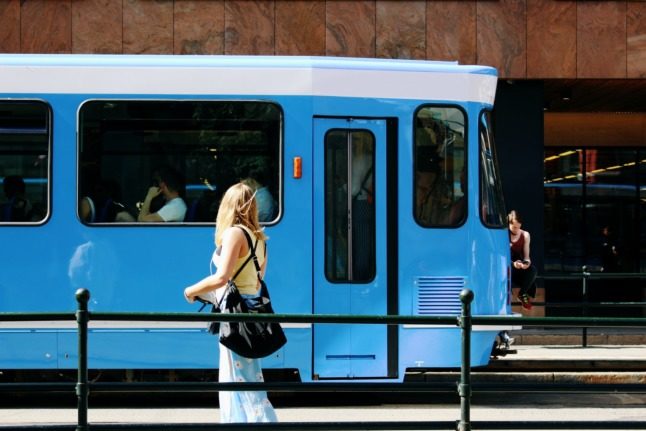Norway’s government, led by prime minister Jonas Gahr Støre, has unveiled the chops, changes, modifications and adjustments it wishes to make to the state budget for 2022.
Finance minister Trygve Slagsvold Vedum presented the changes on Monday afternoon after the initial budget was presented by the ousted Solberg government on its way out of parliament last month.
“The government has had three weeks to prepare a new draft state budget. I think we have used our time well. With the tax measures we are taking in this budget, people will notice that the country is on a new course. Two out of three will be taxed less,” Vedum said in parliament on Monday.
The government will have until December to push the budget proposal through parliament, with the Socialist Left Party their preferred budget partners.
They may face an uphill task to convince their preferred party to help get their budget greenlit as the Socialist Left Party hasn’t greeted the fiscal plan for 2022 warmly.
“This is too grey and too small for Norway. There are some measures here, but it’s not a new direction for the country,” Kari Elisabeth Kaski, the fiscal policy spokesperson for the Socialist Left Party, told public broadcaster NRK.
Cuts to electricity tax
This winter, energy bills are on course to reach eye-watering heights, with record after record being smashed this autumn.
Finance minister and Centre Party leader Trygve Slagsvold Vedum has proposed a 48 percent cut to electricity tax to be implemented when prices are at their highest.
The nearly 50 percent slash will be applied between January and March. Then, for the rest of the year, a permanent cut of 9 percent will be put in place.
The proposal will cut consumers’ electricity prices by around 10 øre per kilowatt-hour during the months where tax will be almost halved.
Tor Reier Lillehol, from the analysis firm Volue Inishgt, has said that a private individual could save between 500 to 1,000 kroner a year, while newspaper VG has said the average family would save around 750 kroner per year.
READ ALSO: What times of day should you avoid using electricity in Norway?
Cheaper childcare
The maximum price for a daycare place will be reduced for the first time in eight years. Families with one child in a daycare centre will save 2,900 kroner per year, and a family with two kids in daycare will save 4,900 kroner.
This is because the maximum spot kindergartens can charge for a spot will be reduced from 3,315 kroner a month to 3,050 kroner.
Lower taxes for most
Those who earn between 250,000 and 700,000 kroner per year annually will pay between 1,000 to 1,700 kroner per year less in tax.
In addition, those aged between 17 and 29 who earn less than 535,000 kroner will receive a tax credit of up to 5,170 kroner.
Residents of Norway pay an income tax of 22 percent, in addition to a bracketed tax that is calculated based on your income.
Tax deductibles for being a union member will also double over two years from 3,850 kroner to 7,700 kroner.
The government has scrapped the plans for an employment tax deduction for young people.
Higher threshold for exempt card
The government will increase the threshold required to receive completely free healthcare by 461 kroner.
In Norway, healthcare is heavily subsidised with small deductibles being paid for treatment. Once you reach a yearly limit then all subsequent health care that is included in the Norwegian National Insurance Scheme is free and you’ll receive an exemption card.
From next year the new threshold for the card will be 2,921 kroner.
Public transport routes could be cut
Many public transport operators have warned in recent weeks that the routes and services offered may be peeled back due to a loss in passenger revenues due to Covid.
The government’s proposal for next year outlined the corona compensation, which set aside money for transport companies that saw passenger numbers drop, will end.
However, Minister of Transport Jon-Ivar Nygård stressed that the government was keeping an eye on the situation.
Wealth tax increases
The Støre government has also said it will increase the wealth tax beyond what the Solberg government pledged.
The rate of the overall wealth tax will be 0.95 percent of one’s net worth. Norway’s wealth tax applies discounts and deductions on assets such as a primary residence.
Houses worth more than 10 million kroner will see a wealth tax increase. Primary homes are currently valued at 25 percent of market value. Under the proposed rules, the portion of a house valued above 10 million, for example, five million kroner, if the property is worth 15 million, will be taxed at 50 percent of market value.
Those who own a second will have to pay wealth tax on 95 percent of the house’s value, compared to 90 percent currently.
Changes at duty-free
The government will change the rules for alcohol and tobacco quotas so that unused tobacco quotas won’t be allowed to be substituted for additional alcohol.
Previously if you hadn’t bought any tobacco products, you could purchase more alcohol duty-free.
Transport and travel changes
Ferry prices will be cut significantly, with the government pledging 1 billion to help bring them down. We previously reported on the government wanting to slash the cost of ferry tickets by 50 percent.
Fuel will be cheaper than initially proposed by the Solberg government in the initial state budget. Fuel will be 18 øre per litre cheaper in taxes than the Solberg government suggested, but still more expensive overall. Petrol tax will still be increased to 1.60 kroner per litre, and diesel tax will increase to 1.87 per litre.
The air passenger tax will also be reintroduced. The low rate will be 80 kroner, and the high rate will be 214 kroner.



 Please whitelist us to continue reading.
Please whitelist us to continue reading.
Member comments